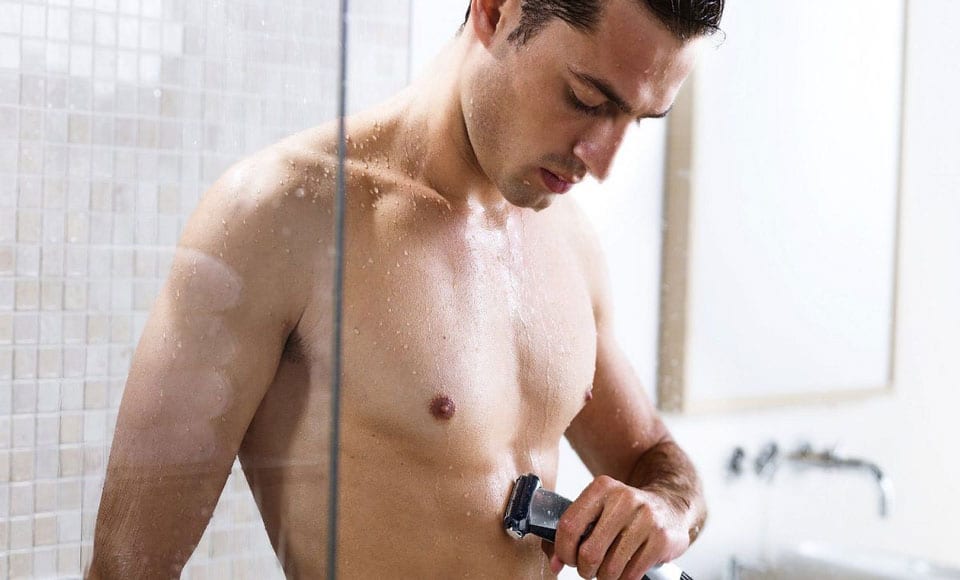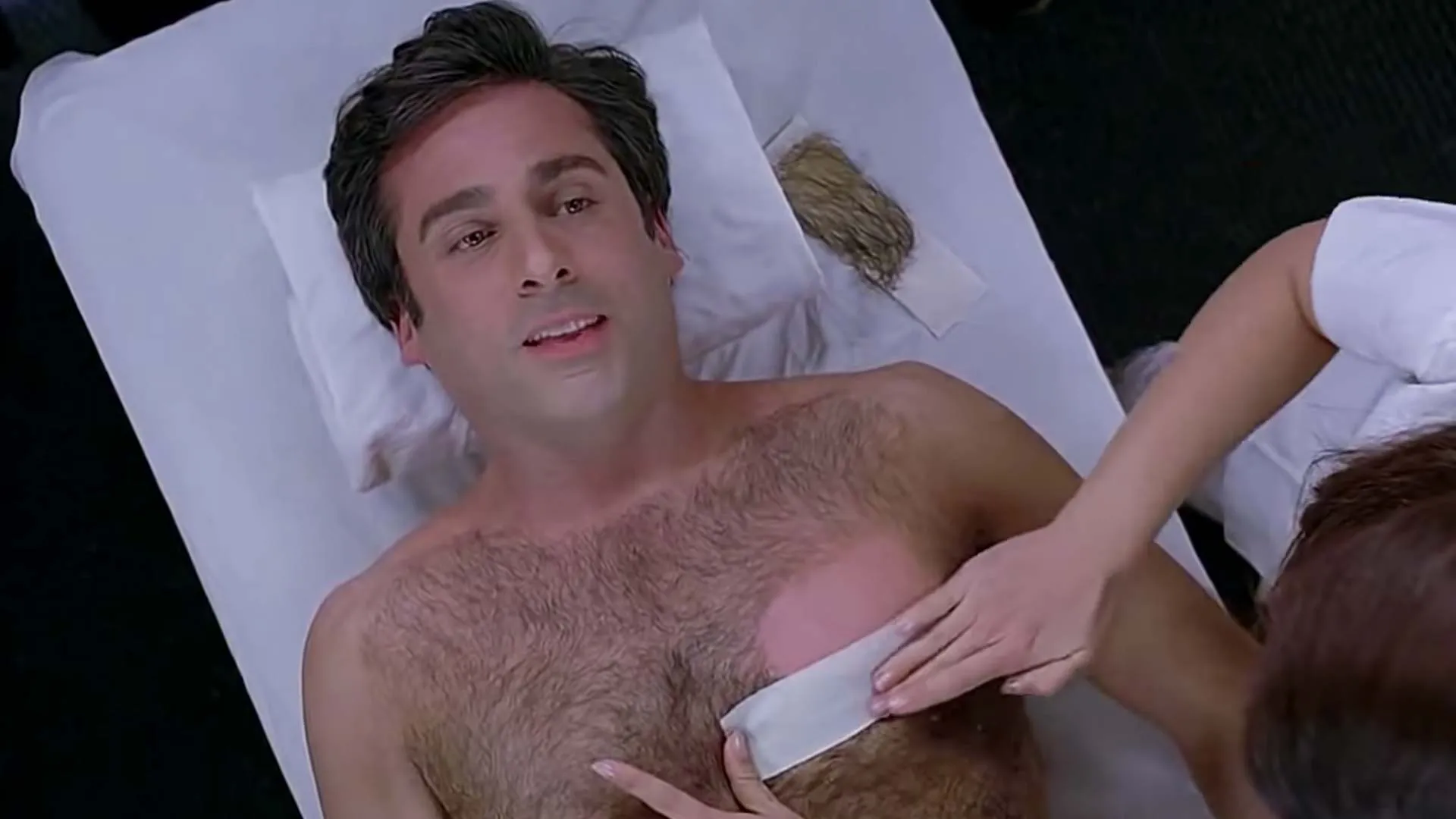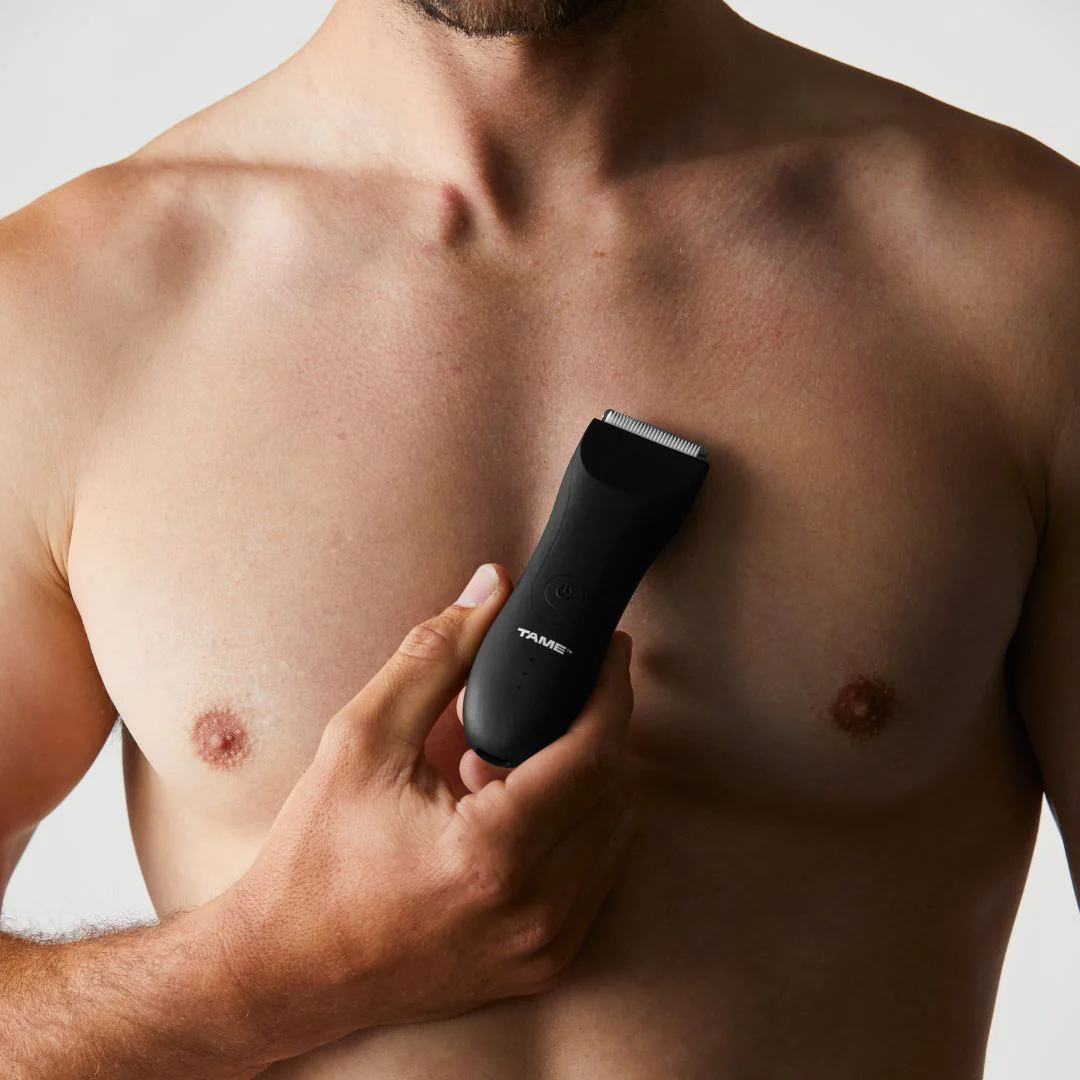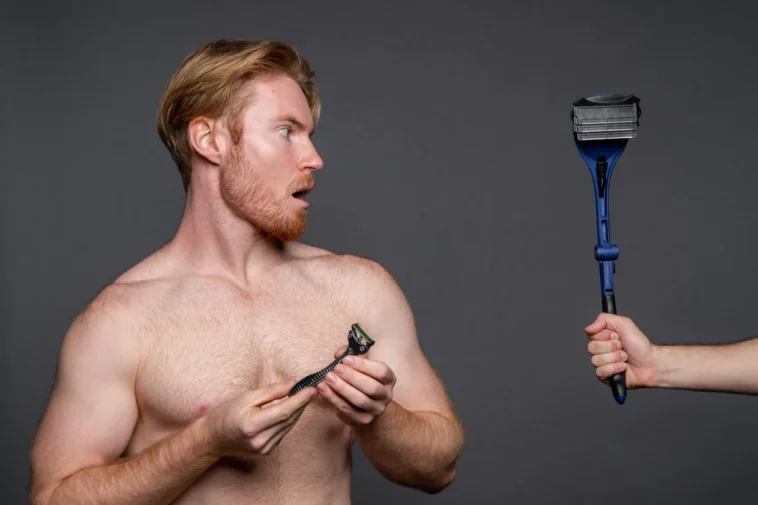Manscaping is the term used to describe the cutting and upkeep of body hair, especially around the genitalia. Maintaining good grooming can lessen body odor, promote better personal hygiene, and increase comfort levels. For those of you seeking help, here’s our full guide on how to do hair trimming properly.
Our Manscaping Guide:
To ensure the desired results every time you manscape, try to follow these steps and tips.
Preparing for Manscaping:

Trimming:
Start by cutting the hair in the desired region with clean, sharp scissors or an electric trimmer with an adjustable guard. By cutting the hair shorter in the beginning, you can smooth up the shaving process and keep the razor from becoming clogged. The hair should be cut gradually to reduce the chance of irritation from sudden large cuts. To prevent unintentional cuts or nicks, pay close attention to the sensitive regions of your body.
Exfoliation:
Use a washcloth or a little exfoliating scrub to gently scrape the skin. By doing this, you can lessen the chance of ingrown hairs and stop dead skin cells from blocking your razor. In addition to making the shaving area smoother, exfoliation helps ensure a closer, more comfortable shave.
Choose The Right Manscaping Kit:
Razor:
For a close shave, choose a high-quality razor with several blades. Disposable razors work well, but if you use a reusable razor, be sure to replace the blades on a regular basis to keep them functional and sharp. Some people find that manual razors provide a closer shave, while others favor electric trimmers due to their ease of use and lower chance of cuts.
Shaving Cream/Gel:
Cover the area you want to shave with a thick layer of high-quality shaving cream or gel. Then, give it a minute to soften the hair and coat the skin in a protective layer. By lowering the friction between the skin and the razor, a cream or gel can help minimize irritation and provide a smoother shaving experience. Always make sure to get the best manscaping products because quality plays a huge role in the process of manscaping.
Proper Shaving Technique:

Direction:
For the first few passes, try to shave in the direction of hair growth to minimize irritation and the chance of ingrown hairs. This is especially crucial to prevent needless discomfort in delicate places. On subsequent passes, you can carefully shave against the grain for an even smoother finish. Proceed with caution, though, as this may make your skin more irritable.
Gentle Pressure:
When shaving, use light, steady pressure to avoid cuts, scratches, and skin irritation. Try not to press too hard, especially in sensitive places; instead, let the razor do the work. Rinse the razor frequently to ensure a smoother glide and avoid irritation by getting rid of hair and shaving cream accumulation.
Stretch the Skin:
Tighten the skin in the region you’re shaving using your free hand. This lessens the possibility of cuts and nicks by providing a smoother surface for the razor to move over. Be gentle and patient, especially in regions where the skin is loose or fragile.
Areas to Manscape:
Genital Area:
To start, use scissors or an electric trimmer to cut the genital hair to a tolerable length. When shaving, proceed with additional caution, particularly in the area surrounding the scrotum. Shave in small portions, pressing skin taut to provide a smoother shave when necessary. Think about using a portable mirror to improve your visibility.
Chest and Stomach:
Trim the hair on your stomach and chest as you see fit. If you’re using a razor, use the same guidelines: make your first passes along the grain, then go against it if you want a smoother finish. Pay attention to any moles, pimples, and sensitive regions, and modify your approach when necessary.
Back:
If you have back hair, you might want to use a specialized back shaver or ask someone for help. Pay close attention to the directions when using a back shaver to have a smooth and comfortable shave. Continual upkeep might be required to maintain the ideal length of the back hair.
Aftercare:

Rinse and Moisturize:
To calm the skin and seal the pores, rinse the region with cold water after shaving, dry it using a fresh towel, then use a moisturizer without alcohol or scent to replenish the skin’s moisture and calm any possible irritation. Look for items with relaxing ingredients like chamomile or aloe vera.
Avoid Tight Clothing:
Tight clothes might cause discomfort when they press against recently shaved skin. Therefore, after manscaping, make sure to wear loose-fitting clothes and underwear to reduce rubbing and irritation.
Check for Irritation or Ingrown Hairs:
Check the shaved areas frequently for any indications of irritation, redness, or ingrown hairs. If problems arise, wait until the skin has healed before shaving again. To help the hair penetrate the skin’s surface, treat ingrown hairs with a mild exfoliation or specialized treatment.
Finally:
Keep in mind that every person has unique skin, so you may need to experiment a little to find the manscaping products and routines that suit you the best. Pay attention to your body, and if you feel discomfort coming on all the time, think about changing your shaving regimen or getting guidance from a dermatologist. Don’t hesitate to share any useful tips and tricks with us in the comment section.




